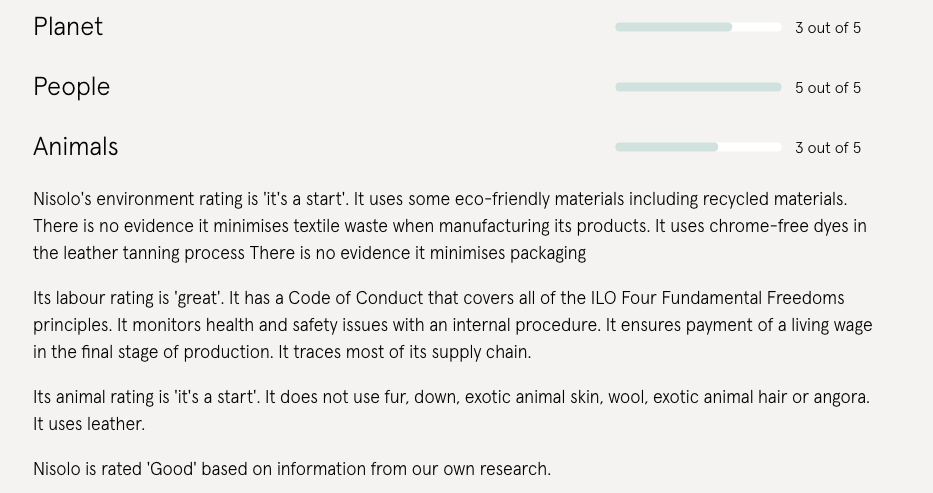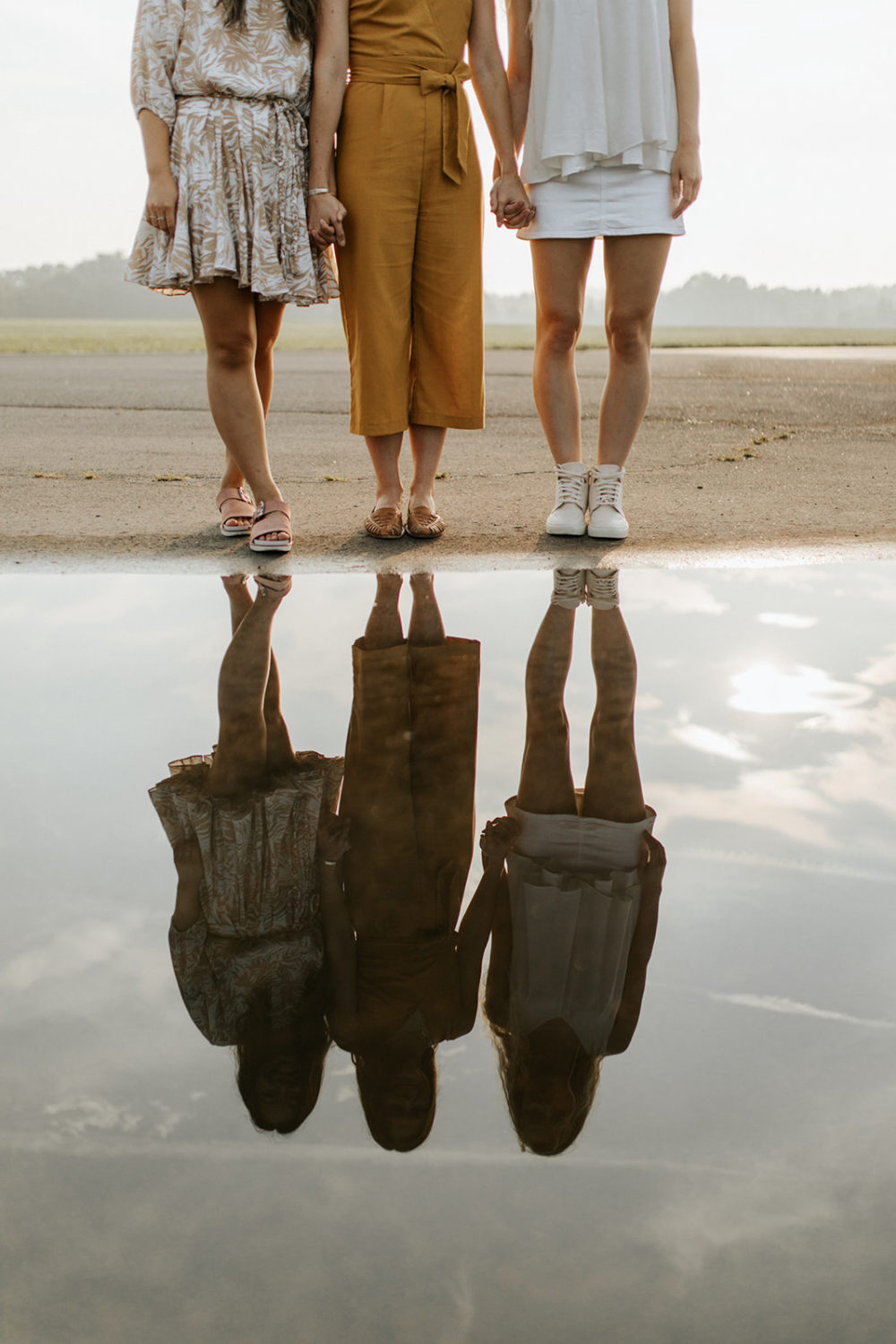How often do you pay attention to what your clothing is made of? Do you ever wonder who made your clothes?
Everyone has clothing of some kind; shouldn’t we know the impact of what we wear? As environmental justice has come to the forefront of national discourse, people are becoming more aware of the need to be more mindful of their shopping, especially when it comes to their closet.
Often, people will refrain from shopping sustainably because it is too expensive for their budget. Though sustainable brands often have higher prices due to living wages and higher quality material, there are smaller changes people can make to move towards sustainable shopping in the fashion industry if people cannot afford to shop sustainably by buying new clothes from sustainable brands.
Yesterday, Brylie wrote about a policy-level solution to fast fashion; here’s how you as a consumer can shop more sustainably.
1. Research!!
Transitioning to a sustainable wardrobe involves a bit of research, but there is no reason to feel overwhelmed! In your research, it is important to look at the brand’s treatment of workers across the supply chain, their environmental impact, and the transparency of language in their descriptions of both.
Workers who make clothing sold by fast fashion brands often only make minimum wage, a legally-mandated wage, compared to a living wage, which would meet a person’s basic needs. When workers are paid this little, they are typically subjected to inhumane conditions such as polluted, unsafe buildings and long working hours.
Many sustainable brands post their wages for consumers in the name of transparency. The CEO of Nisolo, an ethical shoe and accessory company, released a letter which emphasized the significance of living wages and wage transparency. He says that companies should be judged by their lowest wages because that shows how the company truly operates. Larger fast fashion brands may not feature a wage chart, though more consumers are demanding such information because their lowest wages are not ethical.
Good on You is a website featuring articles with sustainable outfit inspiration. It is a great place to begin with research because it is a comprehensive list of most clothing brands in the world, which puts them all in one place for people looking to benefit the planet with their shopping. They rate thousands of brands based on how they treat workers, the planet, and animals. The ratings give viewers a description of the brand, a price range for the brand, and scores them out of 5 based on the aforementioned characteristics.
Here is the rating for the brand Nisolo. It is rated an overall “good.” They recognize Nisolo’s exceptional treatment of workers but mark room for improvement in terms of planet and animals.

2. Buy secondhand
Buying products secondhand is one way to make sustainable shopping more affordable. When people think of buying secondhand, they typically think of thrift shopping. Thrift shopping can be a good way to avoid supporting the mass production of the fashion industry by purchasing used items for discounted prices. However, the concept has caused controversy over the past few years due to wealthier people entering lower-income areas, reducing already limited shopping to lower-income communities, and marking up their purchases to resell them for profit.
After thrift shopping, people have taken to “thrift flipping.” Thrift flipping is when people buy a dress with a pattern they like or a size too large for them and will restyle the piece, typically by sewing, to become a style that suits them. It allows for the textiles to be reused and for people to alter existing clothing to their personal style.
There are other positive ways to shop secondhand. One is to have a clothing swap with friends. Everyone can filter through their closets, deciding what they want to keep and discard. Once everyone has their trading piles, everyone can begin trading their things for a friend’s. This is a simple way to save money and to limit the amount of clothing cycling through second hand stores.
Another way to shop secondhand is through websites such as Poshmark, Depop, and ThredUp. There are hundreds of brands to shop for barely worn, high-quality used clothing and accessories with highly discounted prices. Additionally, each of these websites has an option to post unwanted clothing to resell, so users have the option to make money.
3. The Most Sustainable Piece of Clothing is the One You Already Own
Sustainability isn’t just about shopping with sustainably made products; it’s also about keeping what you already own in a usable state for as long as possible.
There are various ways to keep clothing in good condition, but one way is to limit washing between wears, especially for sweaters, pants, skirts, or clothing with thicker material. Others are to wash as much clothing as possible by hand and to only do full loads of laundry. All of these save water in laundry usage and limit use of drying cycles.
Further, there are sustainable brands of detergent available. The EPA has a comprehensive list of products that reduce, eliminate, or prevent pollution at their source, laundry detergents taking a few spots. For example, Dropps is a brand that uses compostable packaging, 100 percent carbon-neutral shipping, and reduces single-use plastics used in laundry products.
4. Buy Less, Better Quality
As mentioned earlier, sustainable clothing is known for higher prices. If properly cared for, the clothing will last for years, and the cost will stretch over that time, making the price paid worth it. With fast fashion, products are cheap, but they do not last as long.
Some sustainable brands feature affordability. ABLE, located in Nashville, TN, released a statement at the beginning of 2021 announcing that they are reducing selling prices, without disrupting their company wages, after reevaluating their business model. They are doing this to promote “attainable apparel,” as their goal is to enable a greater number of people who cannot pay high prices to have access to affordable, sustainable clothing.
As a way to promote sustainable shopping without compromising on cost, the capsule wardrobe has gained popularity over the past few years. This is the idea of buying a set number of pants, tops, loungewear, etc. that can coordinate with each other for more variety of outfit choices. This minimizes the amount of clothing purchased, which means more money can be spent on quality pieces that will last longer.
Shouldn’t we know the impact of what we wear? Overall, it is crucial for us to know where our clothing comes from and how we can shop cleaner because of the impact clothing production has on workers and the environment. Though sustainable fashion brands may be expensive due to higher wages and ethical materials, there are other ways we can make an impact with our purchases without spending our entire bank account.
- 3 Things I Learned From How to Fight Racism - April 21, 2021
- Opioid Epidemic in Appalachia: Lowering the Death Rate by Poisoning - April 9, 2021
- What is Ecofeminism, and Why Does it Matter? - March 18, 2021
